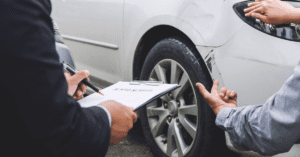Unlocking the untapped potential of insurance and the Internet of Things
By Heather Turner, ReSource Pro —
The insurance industry is known for being traditional and cautious, which often means adopting new technology later than other industries. But with the rise of the Internet of Things (IoT) and other connected world technologies, insurers have the opportunity to tap into new data sources and unlock untapped potential.
Today, more than 25 years since the IoT first emerged, billions of devices seamlessly connect to the internet. These span a diverse range of categories, from vehicles to property to machinery. Some within the insurance sector were quick to recognize the potential these devices held for enhancing risk management strategies.
Even today, however, both personal and commercial carriers lag behind. Many are not taking advantage of the the full potential of the IoT for insurance.
At ReSource Pro, we define “connected world technologies” as devices, sensors, and computing hardware that connect t othe internet, deliver real-time capabilities, and facilitate data-sharing across networks.
The use of telematics in insurance
Many people first think of telematics when they hear the term IoT. This is especially true for personal lines, where many auto insurers offer programs.
Telematics devices can collect data on driving behaviors, such as speed, acceleration, and braking, for individuals and fleets. With that data, insurers have a more accurate picture of their risk profile. This enables insurers to offer personalized insurance policies based on driving habits, which could lower premiums for safer drivers.
Across both personal and commercial lines, interest in telematics is increasing. 74% of personal and 59% of commercial lines carriers are investing in the technology, according to a recent ReSource Pro study.
However, it’s not enough to simply gather information. The same study found that some carriers don’t use the data they’ve collected in an insurance context. For example, nearly a third of personal lines carriers collect – but don’t use – data on routes driven by motorists.
How smart home devices improve risk assessment
Similarly, carriers are struggling to integrate the data generated by other IoT devices into insurance programs. For example, in homes, sensors can monitor risks like water leaks, fires, security breaches, and some weather-related exposures. In the commercial sector, they can help to monitor equipment and machinery in real-time, as well as employee well-being.
In fact, many of these kinds of devices are already used in homes and commercial settings across the US. By leveraging data collected from connected devices, insurers can do more than improve risk assessment. They can offer more customized policies, prevent costly claims, and ultimately enhance the customer experience.
The future of IoT insurance opportunities
Overall, there are vast opportunities for the use of IoT in both personal and commercial lines insurance. As the costs of devices and installation decline, implementation and use will become easier. Additionally, policyholder adoption will rise as insurers more proactively educate consumers and offer discounts.
But as IoT technology continues to advance, it will be crucial for insurers to stay ahead of the curve. They will need to embrace new product innovation, invest in software and hardware, and adapt underwriting and claims processes.
Report: IoT and Connected World Technologies
Find more insights in our recently released report series on IoT and Connected World Tech in 2024 and Beyond. Advisory clients can visit the portal to access the personal lines and commercial lines reports. Please contact the report author Mark Breading if you are interested in a more in-depth conversation on our IoT and Connected World Tech research, including recommendations on how to leverage these technologies.
By joining our community, you’ll receive occasional surveys on crucial P&C industry topics relevant to your organization and role. In appreciation for your perspective, you will gain complimentary access to the resulting research reports. Contact our research team and let’s shape the future of P&C insurance together.
About SMA, a ReSource Pro company
At Strategy Meets Action, our clients advance their strategic initiatives and accelerate their transformational journeys by leveraging our forward-thinking insights, deep vendor knowledge, and vast industry expertise. Strategy Meets Action is an advisory firm that works exclusively with insurers, MGAs, and vendors in the P&C market.
About ReSource Pro
ReSource Pro brings integrated operational solutions to insurance organizations to improve growth, profitability and insurance outcomes. Headquartered in New York, ReSource Pro’s global service centers address client operational needs around the clock. Recognized as an industry thought leader and listed as one of Inc. 5000 Fastest Growing Private Companies annually since 2009, the company is renowned for its focus on innovation, service excellence and trusted partnerships, and its unique productivity platform for insurance operations. More than 5,000 ReSource Pro employees provide dedicated support to hundreds of insurance organizations, consistently achieving a +97% client retention rate over a decade. For more information, visit www.resourcepro.com.
SOURCE: Strategy Meets Action (SMA)




